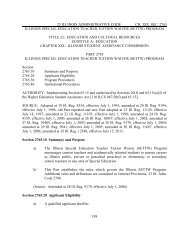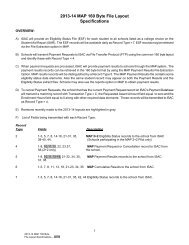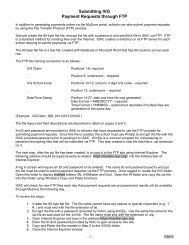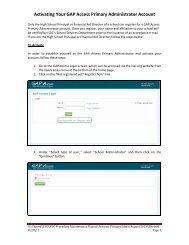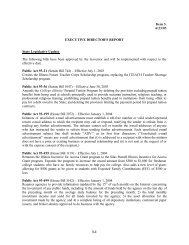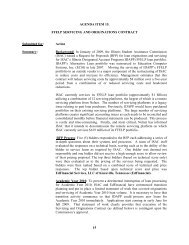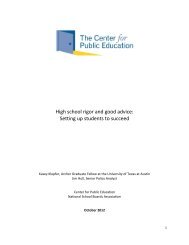MORE GUIDANCE, BETTER RESULTS?
MORE GUIDANCE, BETTER RESULTS?
MORE GUIDANCE, BETTER RESULTS?
Create successful ePaper yourself
Turn your PDF publications into a flip-book with our unique Google optimized e-Paper software.
selors recorded their in-person and telephone contacts with students, including the length of themeeting and the topics covered. They sometimes also noted e-mail or regular mail communications.In interviews, the counselors said they sometimes reviewed the information prior totalking with a student. As noted above, students sometimes met with an Opening Doors counselorwho was not their primary contact. The database allowed staff to review the records forany participating student, facilitating the team approach.Table 3.1 presents some information from the colleges’ Opening Doors counseling database.The data from Owens do not reliably distinguish between in-person and telephonecontacts, so the table shows tallies for both types together. During students’ first semester in theprogram, 94.3 percent of the pooled program group members had at least one contact with anOpening Doors counselor either in person or over the telephone. The program group averagedjust over four such contacts during that semester.During the second program semester, 71.4 percent of the program group members hadcontact in person or over the telephone with a counselor. The lower proportion, compared withthe first semester, likely reflects the decrease in the proportion of students who were takingclasses. (Registration rates are discussed in Chapter 4.)As the bottom panel of Table 3.1 shows, 95.4 percent of the program group membershad at least one in-person or telephone contact with an Opening Doors counselor during theirtime in the study. The majority of program group students — 58.4 percent — had at least sixcontacts, and the average number of contacts was just over eight. The summary outcomesinclude contacts during the two main program semesters (fall and spring), summer semesters,and any postprogram semesters. 3 A total of 17.1 percent of the program group members hadcontact with an Opening Doors counselor after their second program semester.Appendix Table C.1 shows information on students’ contact with Opening Doors counselorsseparately for each college. According to the Opening Doors databases, a higher proportionof the program group at Lorain had contact in person or over the phone with a counselor,and the contact was more frequent. Lorain staff may have been more diligent about enteringcontacts into the database, so this comparison should be interpreted cautiously. (Also, for themost part, the 12-month survey data that are discussed below do not show higher rates ofcontact for the Lorain program group compared with the Owens program group.)3 The data include contacts through the spring 2006 semester.30



